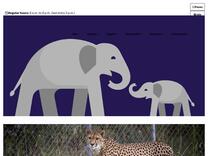Latest Cheetah Cub News | Smithsonian’s National Zoo and Conservation Biology Institute https://nationalzoo.si.edu/animals/latest-cheetah-cub-news?page=2
Check out the latest news and updates about cheetahs.
As the cubs grow, we want to ensure that they have a strong relationship with us.

